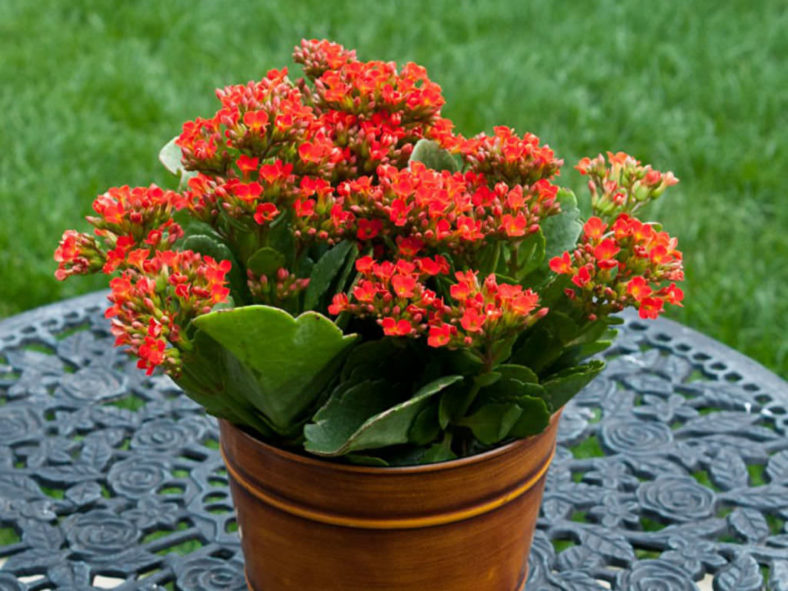
Source worldofsucculents.com
Welcome to our guide on caring for kalanchoe, a stunning houseplant known for its vibrant blooms and low-maintenance requirements. Whether you’re an experienced plant parent or just starting out, this article will provide you with all the essential information you need to keep your kalanchoe thriving. From proper watering techniques to ideal lighting conditions, we’ll cover it all. So, let’s dive right in and discover the secrets to a healthy and flourishing kalanchoe!
1. Choosing the Right Location
Understanding Light Requirements
When it comes to kalanchoe, proper lighting is crucial for its overall growth and well-being. These plants thrive in bright, indirect light, making them perfect for areas near windows where they can receive plenty of sunshine without direct exposure. Avoid placing your kalanchoe in areas with intense, direct sunlight, as it can lead to leaf burn and damage.
On the other hand, insufficient light can cause your kalanchoe to become leggy and produce fewer flowers. If you’re unsure about the lighting conditions in your home, observe the plant’s behavior. If it starts leaning towards the light source or its leaves lose their vibrant color, it’s an indication that the current location may not be ideal.
Temperature and Humidity Considerations
Kalanchoe plants prefer average room temperatures between 60 and 85 degrees Fahrenheit (15-29 degrees Celsius). Avoid placing them in drafty or extremely cold areas, as it can lead to temperature stress and negatively impact their health. Additionally, maintaining a moderate humidity level is beneficial for kalanchoe, but they can tolerate lower humidity environments as well.
2. Watering Techniques for Kalanchoe
Finding the Perfect Balance
Watering your kalanchoe properly is essential to prevent issues like root rot or dehydration. As a general rule, allow the top inch (2.5 cm) of the soil to dry out before watering again. Stick your finger in the soil to check for moisture level – if it feels dry, it’s time to water your plant.
However, be cautious about overwatering, as kalanchoe is susceptible to root rot. Ensure that the pot has proper drainage holes to prevent excess moisture buildup. Additionally, avoid letting the plant sit in standing water, as it can lead to waterlogged roots.
Watering Frequency and Techniques
Kalanchoe plants have a preference for well-draining soil, making it easier to regulate watering. During the active growing season, which generally spans from spring to fall, water your kalanchoe thoroughly and allow excess water to run out of the drainage holes. Be sure to empty the saucer beneath the pot to avoid water accumulation.
As winter approaches, kalanchoe enters a dormant phase, and its water requirements decrease. Allow the soil to dry out slightly more between waterings, but never let it become bone dry. Strike a balance by adjusting the watering frequency to match the plant’s needs during different seasons.
3. Fertilizing and Pruning
Nourishing Kalanchoe with Fertilizer
Proper fertilization helps promote healthy growth and vibrant blooms. During the active growing season, feed your kalanchoe with a balanced, water-soluble fertilizer every four to six weeks. Dilute the fertilizer according to the instructions provided, ensuring not to exceed the recommended amount.
However, remember to withhold fertilizer during the dormant phase when the plant isn’t actively growing. This allows the plant to rest and prepare for the next growth spurt.
Pruning for Optimal Form and Blooming
Pruning your kalanchoe can help maintain a neat and compact appearance. To encourage bushiness, pinch back the stems after flowering, leaving at least two to three sets of leaves. Regular pruning not only keeps your plant in shape but also stimulates the growth of new branches and more abundant blooms.
4. Kalanchoe Care Table Breakdown
| Aspect | Care Requirement |
|---|---|
| Light | Bright, indirect light |
| Temperature | 60-85°F (15-29°C) |
| Watering | Allow top inch of soil to dry before watering |
| Fertilization | Every 4-6 weeks during active growth |
| Pruning | Pinch back stems after flowering for bushiness |
Frequently Asked Questions
Q: How often should I repot my kalanchoe?
A: Repotting kalanchoe is usually necessary every 1-2 years, or when the plant outgrows its current pot. Choose a slightly larger pot with adequate drainage, and use a well-draining soil mix.
Q: Can I propagate kalanchoe from leaf cuttings?
A: Yes, kalanchoe can be easily propagated from leaf cuttings. Simply take a healthy leaf, let the cut end dry for a couple of days, and then place it in a pot with well-draining soil. Keep the soil slightly moist until new roots and baby plants emerge.
Q: Why are the leaves of my kalanchoe wrinkling?
A: Wrinkled leaves can indicate either overwatering or underwatering. Check the moisture level in the soil and adjust your watering accordingly. It’s crucial to find the right balance to ensure the health of your kalanchoe.
Q: What should I do if my kalanchoe gets leggy?
A: If your kalanchoe develops leggy growth, it is an indication of insufficient light. Move the plant to a brighter spot, preferably near a window with indirect sunlight, and prune back any excessively long stems to promote a bushier growth habit.
Q: Can kalanchoe survive outdoors?
A: Kalanchoe is primarily an indoor plant, but certain varieties can be grown outdoors in mild climates. They thrive in USDA zones 10-12, where temperatures remain consistently warm. However, it’s essential to protect them from direct sunlight and frost.
Conclusion
Caring for kalanchoe doesn’t have to be complicated. By providing the right balance of light, water, and nutrients, you can enjoy the beauty of this vibrant houseplant for years to come. Remember to pay attention to its specific needs during different seasons, and don’t hesitate to experiment and learn from your plant’s responses. With proper care and love, your kalanchoe will reward you with stunning blooms and a lively presence in your home!